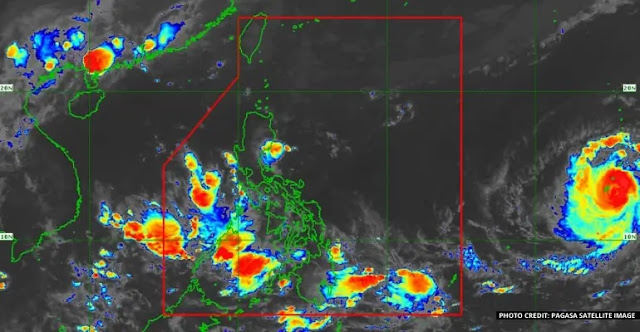Super Typhoon Mawar has been rapidly intensifying over the past few days, reaching maximum sustained winds of 175 m.p.h. This classification officially meets the National Weather Service's definition of a super typhoon. The Philippines, recognizing its strength, had already classified Mawar as a super typhoon, using a slightly lower threshold of sustained winds at 115 m.p.h. It is worth noting that different regions use varying methodologies to measure wind speeds, resulting in potentially higher readings in the United States due to a different "averaging period." As this formidable storm approaches, it is crucial to understand its forecasted track, potential impacts, and necessary precautions.
Forecasted Track and Intensity
Super Typhoon Mawar is currently on a westward path, expected to continue until tomorrow while accelerating. However, it is projected to make a turn towards the west-northwest on Saturday. The storm is anticipated to enter the Philippine Area of Responsibility (PAR) tomorrow evening or on Saturday morning. By early next week, Mawar's center is expected to be within 300 km of the Batanes-Babuyan archipelago. This projected track suggests a significant impact on Extreme Northern Luzon.
The super typhoon is expected to reach its peak intensity within the next 24 to 36 hours. While some slight weakening is possible by Saturday, Mawar is likely to maintain its super typhoon status until Sunday or early Monday. This sustained strength is due to highly favorable environmental conditions. However, by Monday or Tuesday, Mawar will face increasing wind shear, cooler sea surface temperatures resulting from its slowdown, and dry air intrusion. These factors will contribute to a faster weakening process.
Potential Impacts and Precautionary Measures
Given the current forecast scenario, Super Typhoon Mawar poses several potential impacts that must be considered. One major concern is the heavy rainfall that may trigger flooding or rain-induced landslides over Northern Luzon. These conditions are likely to begin late Sunday or on Monday next week. Residents in vulnerable areas should closely monitor the situation and be prepared to take appropriate measures to protect lives and property.
Extreme Northern Luzon can expect to experience strong to storm-force conditions, while the northern and eastern portions of Northern Luzon mainland may face strong to gale-force conditions. As a result, Wind Signals will likely be hoisted by tomorrow or Saturday in anticipation of these severe winds. These signals serve as vital warnings for residents to stay vigilant and take necessary precautions.
Additionally, Super Typhoon Mawar is expected to enhance the Southwest Monsoon, bringing monsoon rains over the western portions of Central Luzon, Southern Luzon, and Visayas. This could lead to localized flooding and disruptions in these areas. Residents in these regions should stay informed about the latest updates and follow the guidance provided by local authorities.
As Super Typhoon Mawar continues to intensify and approach the Philippine Area of Responsibility, it is crucial for the public and disaster risk reduction and management offices to remain vigilant. The storm's forecasted track suggests a significant impact on Extreme Northern Luzon, with heavy rainfall, strong winds, and potential flooding. Adequate preparations and precautions must be taken to ensure the safety and well-being of residents in affected areas.
Monitoring updates from trusted weather authorities, such as the Philippine Atmospheric, Geophysical and Astronomical Services Administration (PAGASA), is essential during this time. Residents should heed the advice and warnings provided by local authorities and be prepared to take prompt action to mitigate the potential risks associated with Super Typhoon Mawar.
By staying informed, following safety protocols, and supporting one another, we can navigate through this challenging weather event and ensure the well-being of our communities. Here are some additional recommendations and tips to help you stay safe during Super Typhoon Mawar:
-
Stay Informed: Keep track of the latest weather updates and advisories issued by PAGASA or your local weather authority. These updates will provide valuable information on the storm's track, intensity, and potential impacts in your area.
-
Prepare an Emergency Kit: Assemble an emergency kit that includes essential items such as non-perishable food, drinking water, a first aid kit, flashlights, batteries, a portable radio, extra clothing, blankets, and important documents. Make sure the kit is easily accessible and sufficient to sustain you and your family for at least 72 hours.
-
Secure Outdoor Items: Secure or store any loose objects in your yard or balcony that could become projectiles in high winds. This includes patio furniture, potted plants, and outdoor decorations. Trim any weak or overhanging branches near your property that could potentially cause damage during the storm.
-
Reinforce Doors and Windows: Strengthen your home's doors and windows to withstand strong winds. Consider installing storm shutters or plywood to protect against flying debris. Ensure that all doors are properly sealed to prevent water intrusion.
-
Evacuation Planning: Familiarize yourself with your community's evacuation plans and identify the nearest evacuation centers. If you reside in a low-lying area, near rivers or coastal regions, it may be necessary to evacuate if instructed by local authorities. Prepare an evacuation bag with essential items in case you need to leave your home quickly.
-
Secure Important Documents: Safeguard important documents, such as identification papers, insurance policies, medical records, and emergency contact information. Store them in a waterproof container or make digital copies and store them securely in the cloud.
-
Stay Indoors: Once the storm approaches, it is crucial to stay indoors and away from windows. Find a safe area in your home, preferably an interior room on the ground floor, and take shelter there until the storm passes. Avoid going outside unless absolutely necessary.
-
Power and Utilities: Expect power outages during severe weather conditions. Charge your electronic devices in advance and have a backup power source, such as a generator or power bank, if possible. Turn off and unplug electrical appliances to prevent damage from power surges when the electricity is restored. If you use a generator, follow the manufacturer's instructions and ensure proper ventilation.
-
Post-Storm Safety: After the storm has passed, exercise caution when venturing outside. Be aware of potential hazards such as fallen trees, downed power lines, and flooded areas. Avoid walking or driving through floodwaters as they may be deeper or swifter than they appear.
-
Support Community Efforts: During challenging times like these, it is crucial to support and assist one another. Check on your neighbors, particularly the elderly, disabled, or those who may need additional help. Collaborate with local community organizations and authorities to provide aid and relief to affected areas.
Remember, the safety of yourself and your loved ones is paramount. By being prepared, staying informed, and taking appropriate precautions, we can navigate through the challenges posed by Super Typhoon Mawar and ensure the well-being of our communities.






No comments:
Post a Comment